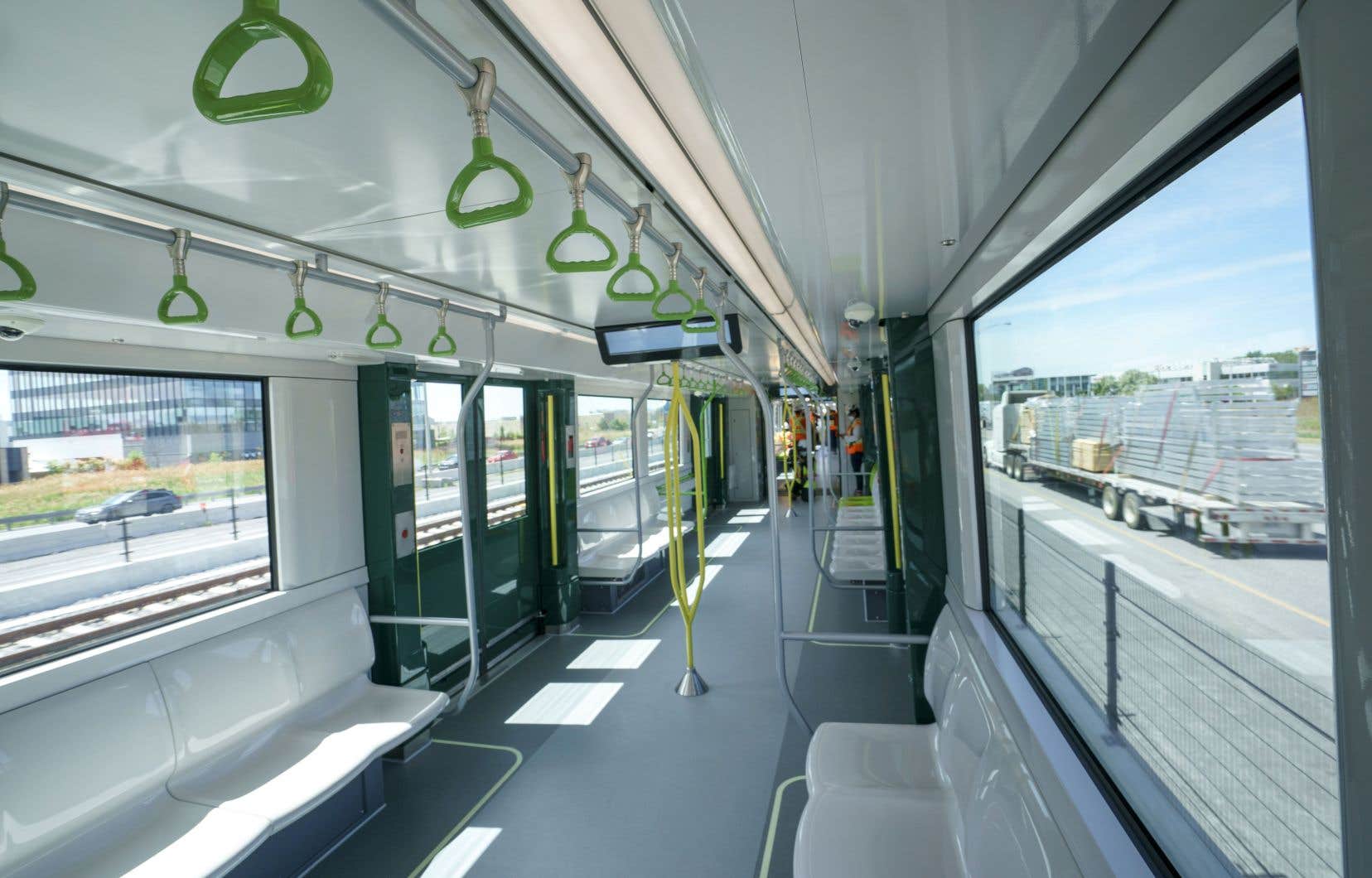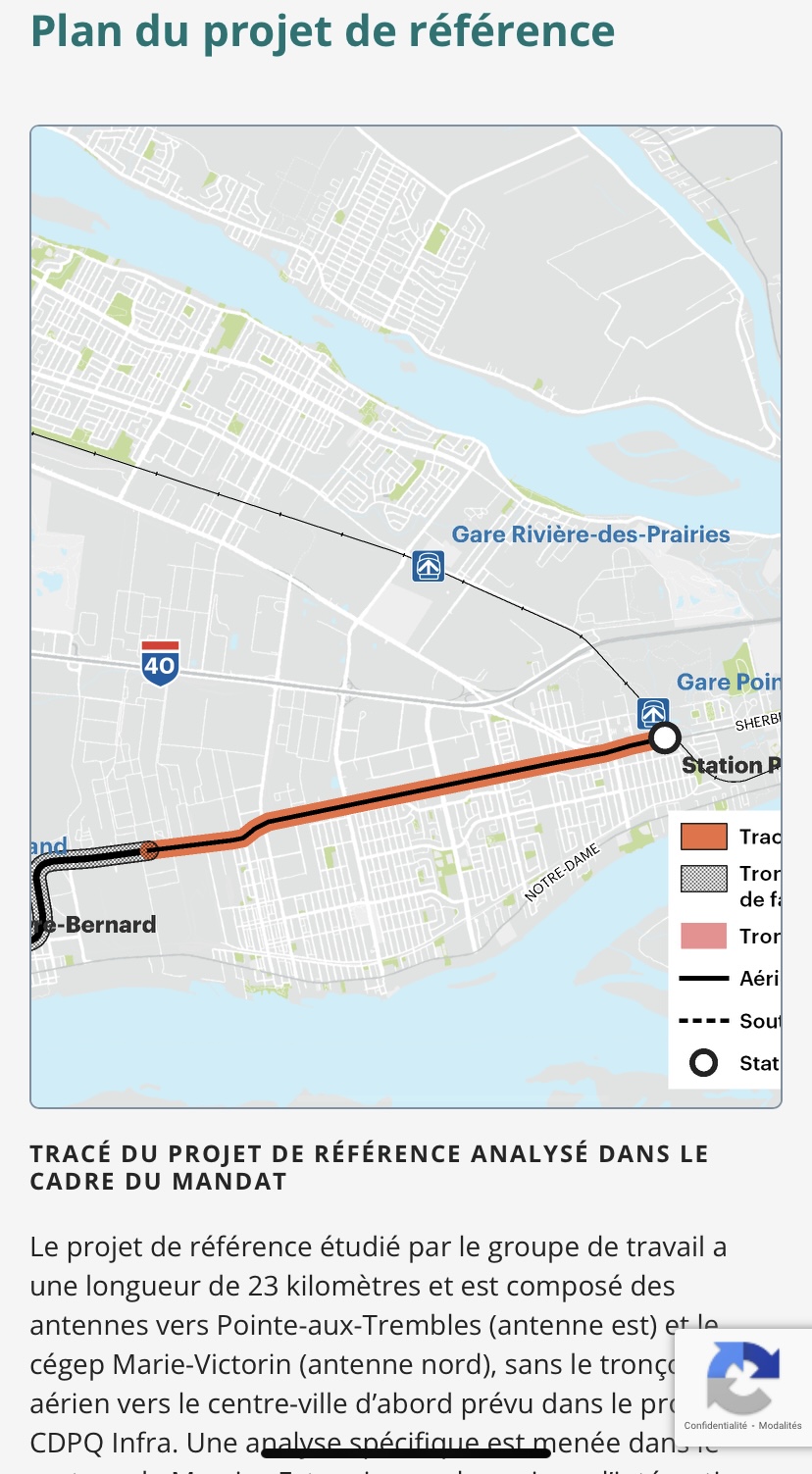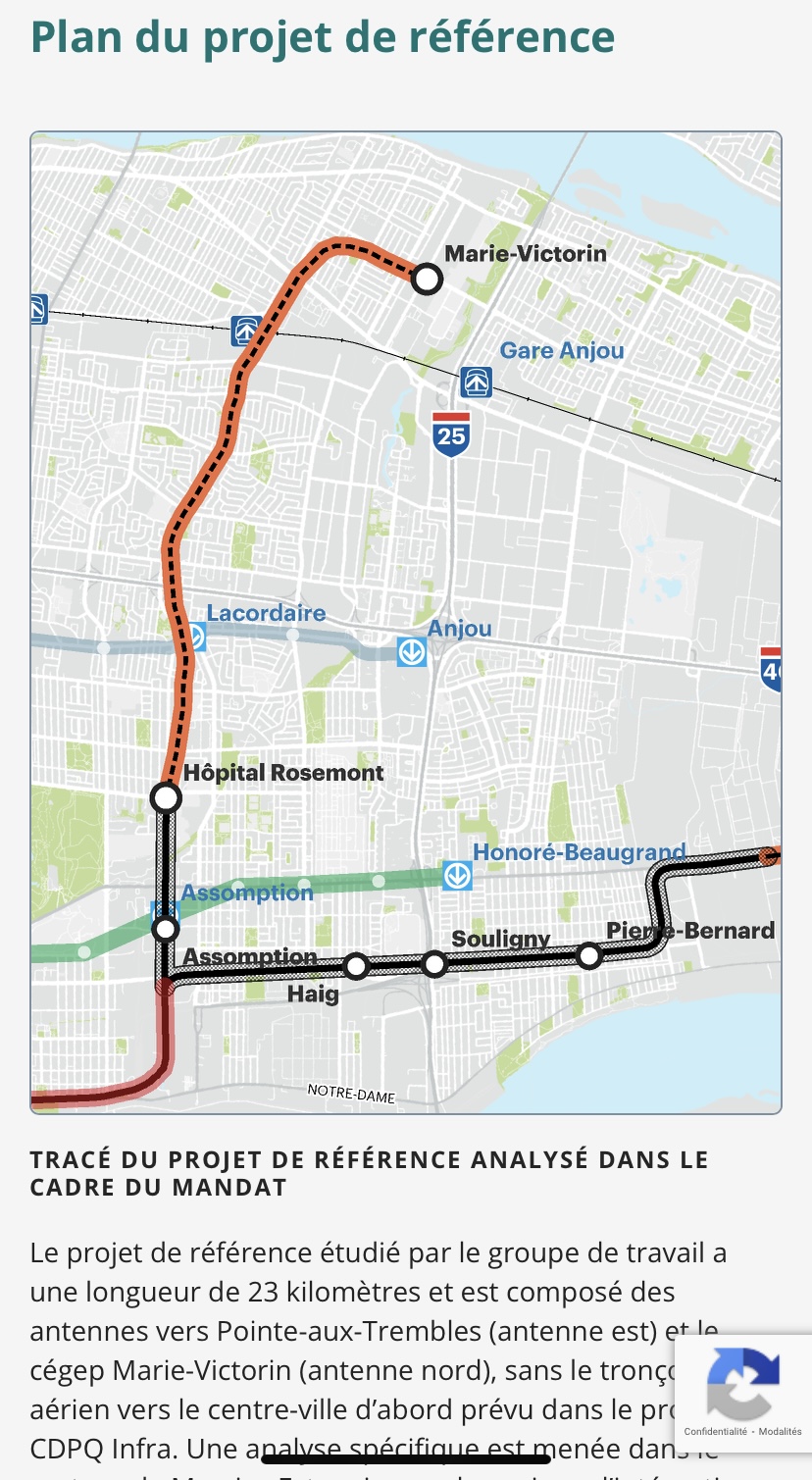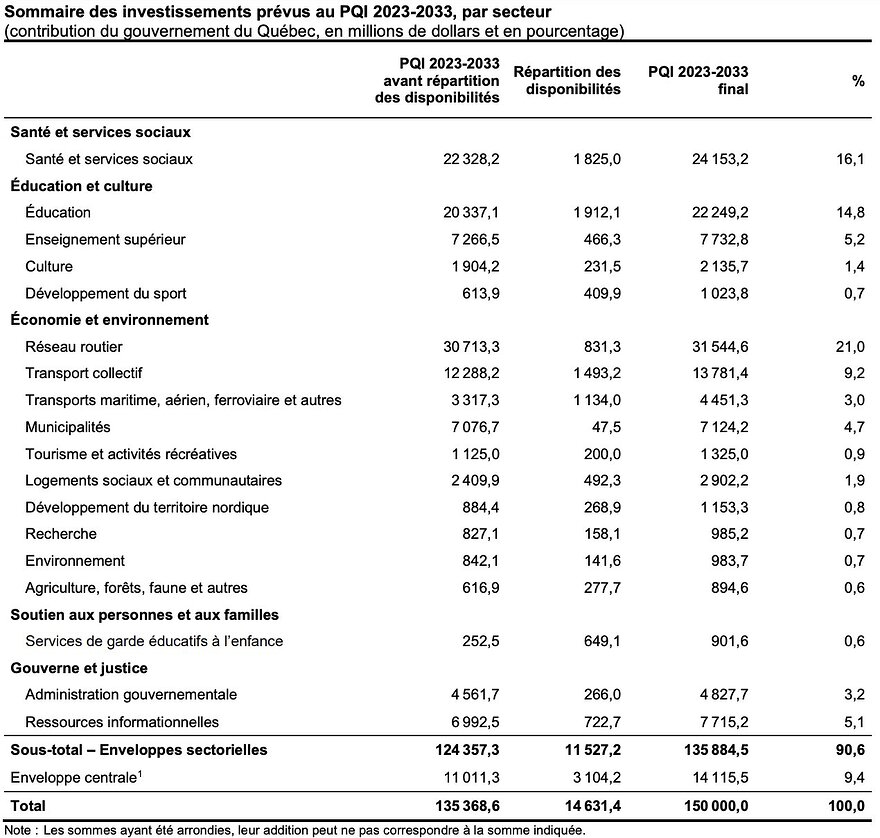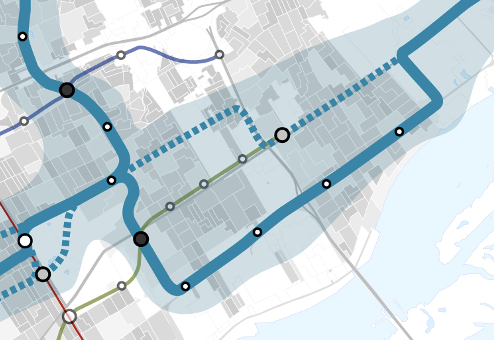Montreal’s Transit Disaster
The REM was a bright spot for Montreal, but it’s clear now that it was the exception.
RM
The first REM has been an incredible project for Montreal. The price has increased and the timeline for the project has slipped, but on the whole the project has gone fairly well, with lots of trains delivered, visible progress region-wide, redevelopment already happening near stations, and intense testing underway.
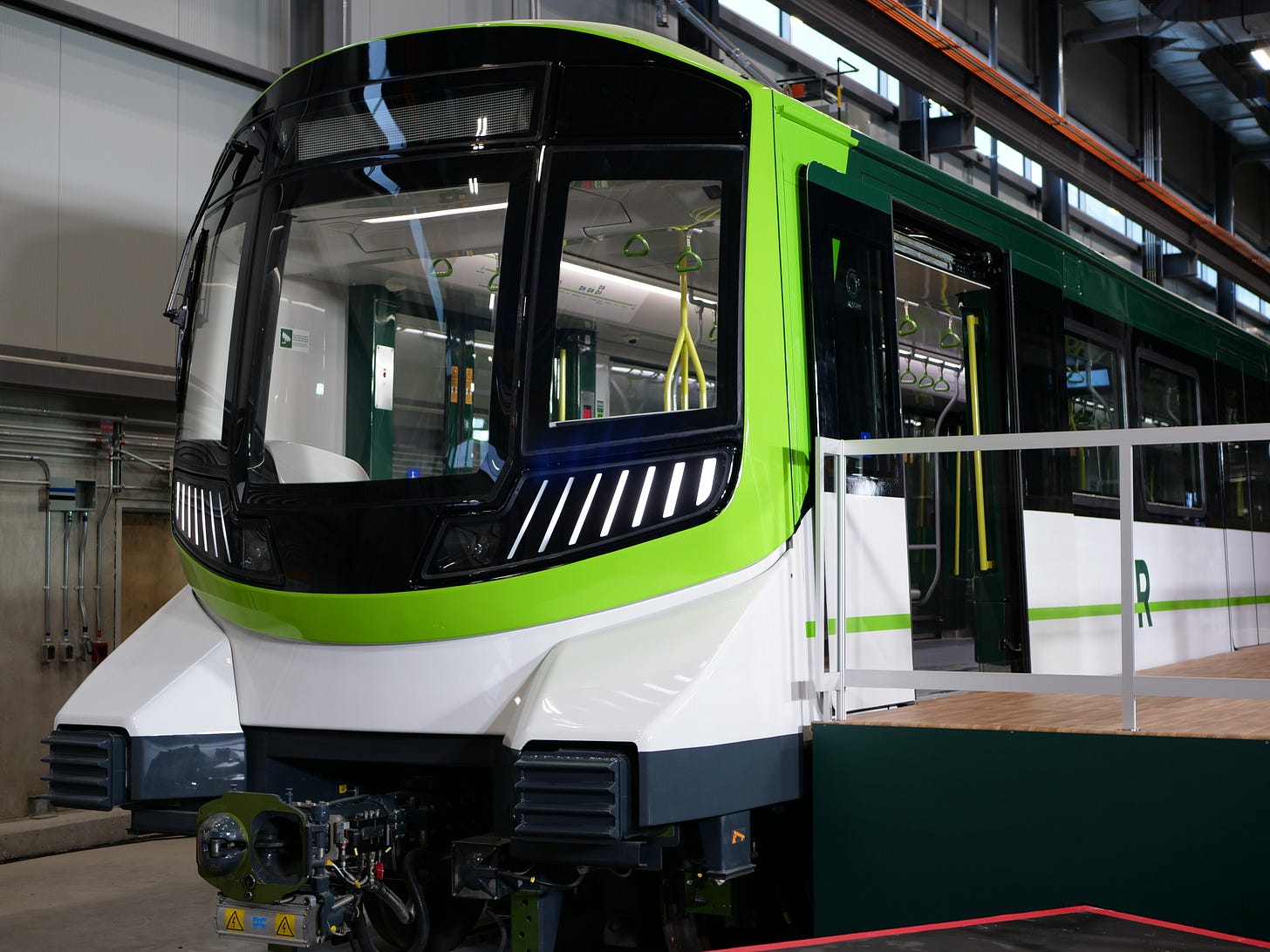
Montreal REM vehicle.
And I guess that’s the nice thing about the first REM — which I will refer to from here on out as REM A. At 67 kilometres in a single project, it’s huge by the standards of most cities, and so with it all happening at once, Montreal is getting quite the boost, especially as it tackles a bunch of things in one go. For example, Montreal will now have:
- an air rail link,
- a second rail connection to the south shore and Laval,
- frequent service to the west island,
- three new rapid transit interchanges,
- rapid transit service to Griffintown (or the general area),
- platform screen doors (perhaps influencing the metro to retrofit them),
- and 23 new rapid transit stations & 67 kilometres of new rapid transit.
My point in listing these is to set up a comparison. The last big rapid transit project (sorry Pie-IX BRT) built in Montreal pre-REM was the Orange line extension to Laval — that project was good in that it brought the Orange line under the river, added a new interchange with the St. Jerome EXO line, and brought three new stations to the network. But the REM’s impact is clearly several times larger.
I think this highlights how silly the ideas that came about when the REM was introduced were about the “lower-quality” of this new system when compared to the metro. South Shore residents who will be the first to benefit from the REM will see trains every few minutes, with more modern amenities than Orange Line extension riders, a beautiful views crossing the Saint Lawrence, several new useful areas connected up to fast and frequent rail transit, and more. In effect, the first phase of the REM is at least as impactful as the last metro project Montreal built.
In the first few years of the project things really felt super good, Paige Saunders’ series
on the project nailed this. People were taken aback by the speed with which the project moved forward, construction was happening, and trains were being delivered — the progress was undeniably significant and people had a really positive impression.
This was generally the sense that the transit folks I know had coming in to the REM de l’Est (I’ll call this REM B).
When it was proposed, I was personally so excited that I dropped everything and made a same day video on the project. It would Add about 30-40% more track to the initial network to bring it over 100 kilometres with nearly 50 stations, nearly doubling the station count of the Metro. At the same time, the rather radial layout of this combined REM network would complement the more orbital metro system quite well, with a single interchange point at or around Gare Centrale — allowing say a trip from the South Shore to the east end, or from Montreal North to the airport. Since the project had been planned by CDPQ Infra, its design and features were well aligned with the REM A as well, creating a nice cohesion that the existing metro network has with very similar trains used on all lines. The project would cost more than the initial promises for the REM A — at $10 billion CAD — but this was with COVID inflation, and it was also going to have a number of new underground stations, a new rail yard, platform screen doors, and (added later) a new tunnel into Gare Centrale
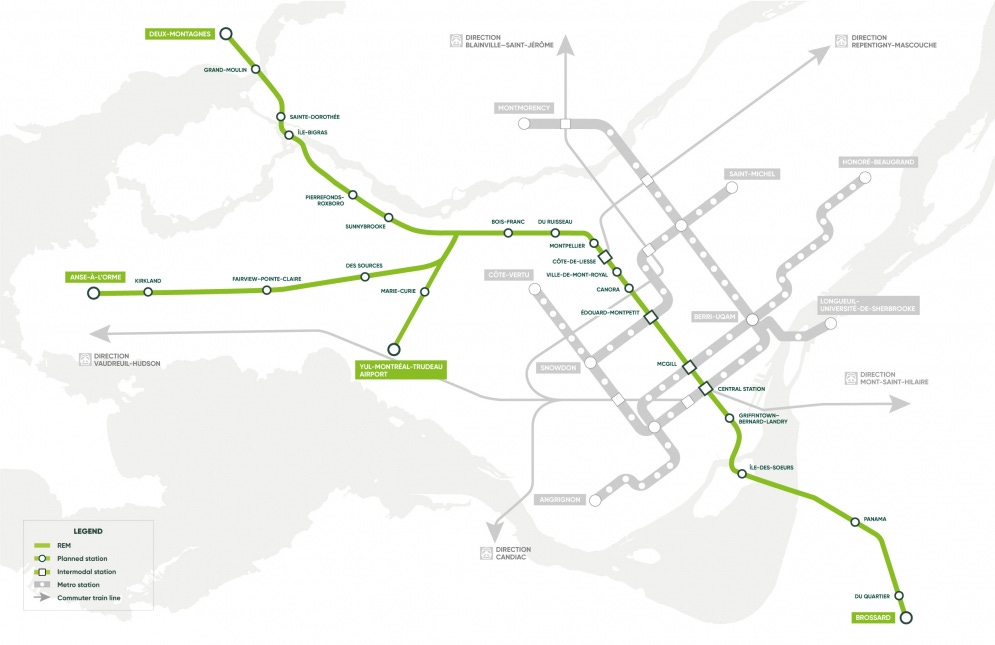
Map of the initial REM system.
On the whole, the project seemed really compelling to me — the cost was high, but given this is North America it didn’t seem nearly as crazy, and the single project approach meant tying things up really nicely — rather than dealing with possibly similar, but harder to track cost increases and delays from a number of smaller projects.
Now, the project was instantly notable for having trains run elevated into the city centre along Rene Levesque Boulevard and to Montreal east, and this was divisive even among transit supporters. But, the more I think about this the more it frustrates me. Rene Levesque is a perfect street for elevated rail: it is wide — and thus even the presence of a guideway with elevated trains isn’t going to be a problem for buildings fronting the street or creating a “closed-in” feeling reminiscent of traditional steel elevated rail such as in Chicago or New York. This would have been in line with elevated metro guideways in plenty of cities in Europe, and in Asia it would frankly be tame.
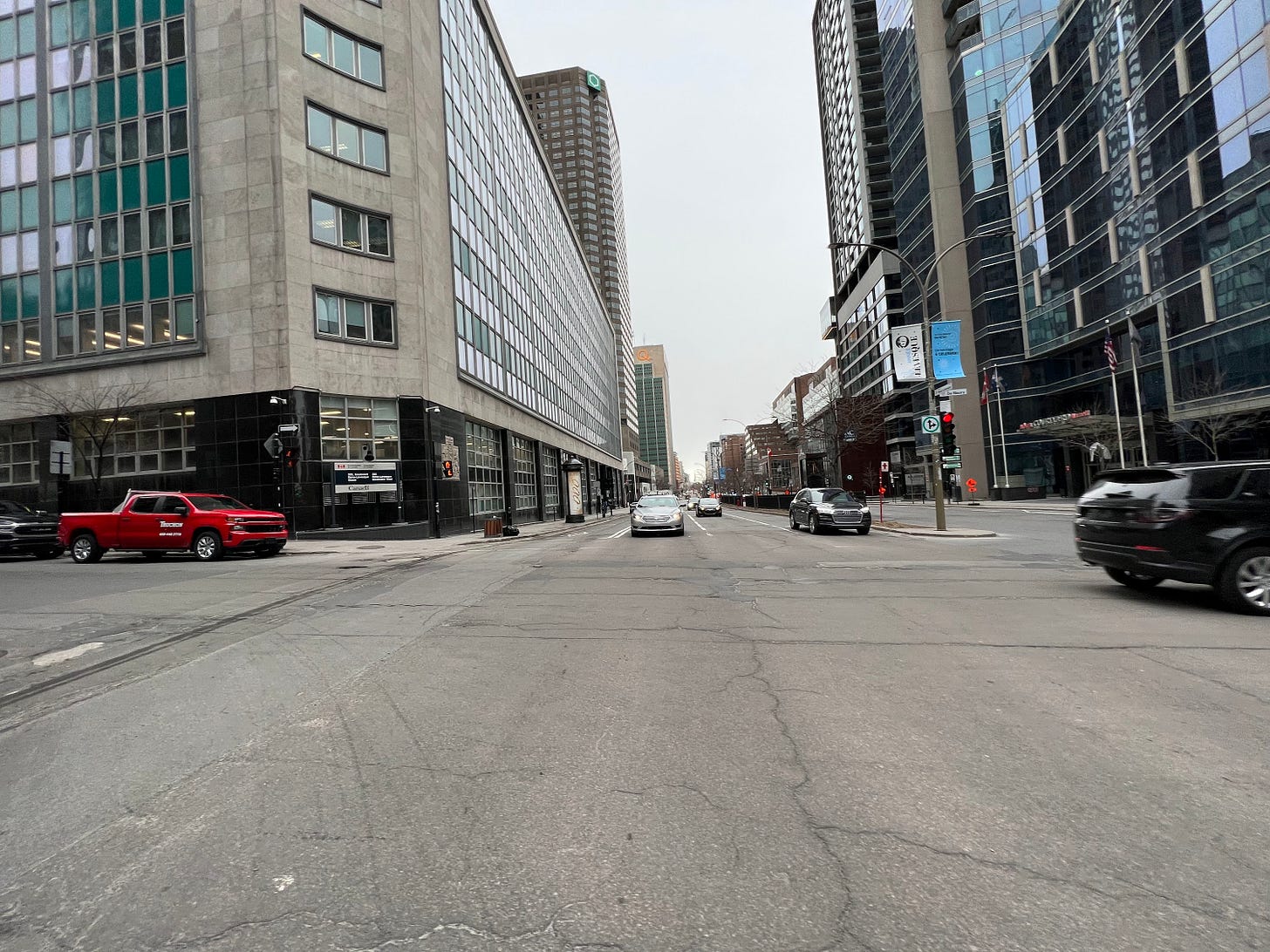
Rene Levesque — a street so wide and hostile it has a fence down the middle!
The one section of Rene Levesque that was questionable with elevated rail was heading into Gare Centrale, and CDPQ offered to bury this section. The rest of the elevated portion was refined with a very cool design that had the guideway structure and curved overhead catenary supports form a loop shape, with unusual angular guideway pillars — but by this time, the project was dead.
The NIMBYism around the REM B was quite a spectacle. There was lots of the normal anti-elevated rail talking points — “this would turn the street into an unpleasant place” (despite the heavy car traffic and many lanes which exist today), and several people compared the light, narrow, and rather short structure to the elevated expressway in Montreal north — it was painful. The NIMBYism even went further complaining about a section of track disliked by some NIMBYs being sited along a street running next to a freight rail line . It was very painful, and the worst thing to see were proposals to cut the downtown connection off of the project entirely with the justification that the Green Line took a similar path — the Green line would be 1) slower than the REM, but, 2) it would also mean an extra transfer for regional journeys like those I mentioned above, getting off one REM, riding half the Green line, and then getting on another REM. From a network coherence point of view it made no sense, and follows a pattern of suburban rail seen in Chinese cities that I frequently complain about where suburban lines are often built separately from urban lines and you need to change midway along your journey to keep going in the same direction (a linear transfer ) for urban-suburban journeys. Of course, if the REM was successful, it would also possibly be dropping off the equivalent of one REM A four-car train every two minutes at the end of the green line — likely to cause capacity issues.
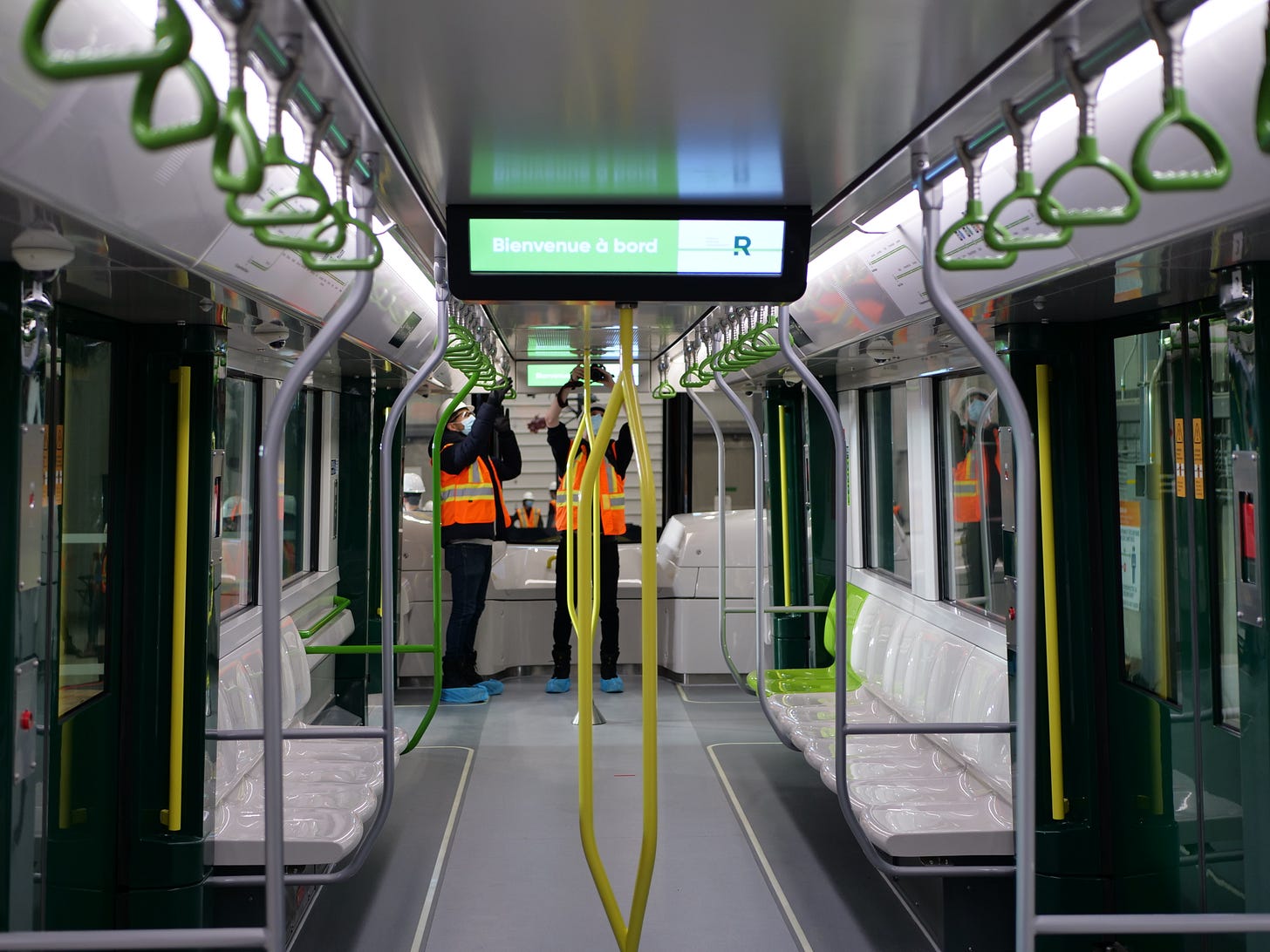
Interior of a Montreal REM train.
Now, it would be wrong to suggest that CDPQ did not make any mistakes in the process of rolling out the REM B. For one, my personal opinion was pushing for the REM B before the REM A was done was a big mistake — even though progress on REM A had been moving along well, the reality of a transit construction project is that it’s mostly all downside until the project opens and then mostly upside for the rest of time — as long as maintenance is done well. The public in Montreal still have not ridden the REM and many have not even been on a train, and so it’s hard to see any downside to cancelling the project. Residents have recently been complaining about noise from trains in testing and this is more or less the same problem — you get all of the downside and none of the upside and the noise might well bother you!
The other mistake CDPQ made was talking about how a fully-tunnelled downtown alignment was “impossible”. This not only made them seem unserious to people familiar with transit (cut-and-cover would seem like a very compelling option for a wide street like Rene Levesque, and there was room for other tunneling methods to), but it also made it seem like they were acting in bad faith. I am not sure what happened behind the scenes, but the obvious solution to this political problem of elevated trains in the city centre was probably politicians — CDPQ should have said “if Quebec is willing to pay to tunnel the downtown portion of the project and take on the cost of additional risk, we can still build it”, but that didn’t happen. Instead, the project was handed over to the more “traditional” transit authorities, and now we have the transit disaster referred to in the title.
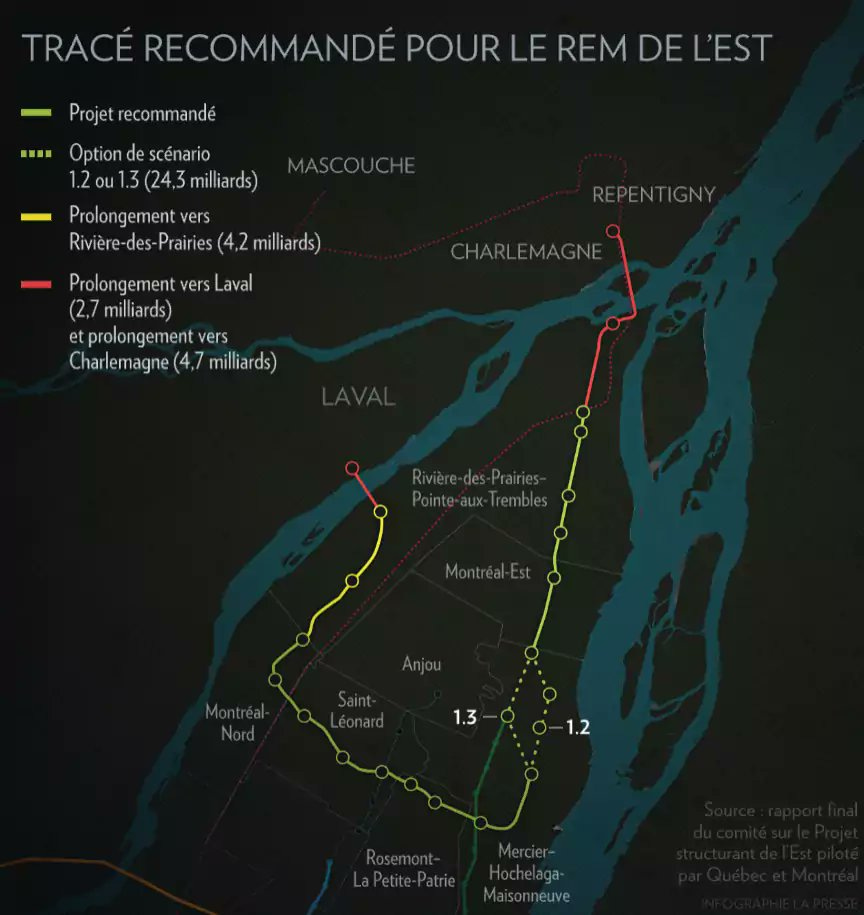
A Map and Costing of the “new” REM de l’Est, Credit: La Presse
The biggest problem with the new plan from the start was that it got rid of the downtown leg, with little acknowledgement about the impact this would have on the number of transfers and travel times for journeys. Further still, it was unclear what technology would be chosen — automated rail is a good option for regional journeys; trams — which Montreal frequently entertains — are not. There was also discussion of extending the project beyond the Island of Montreal into Laval and Repentigny.
The big news, which came out today, is the planned pricing and alignment for the project, which is quite frankly insane . The total price for the “new” REM de l’Est is over $30 billion CAD without even touching downtown Montreal. That should easily be enough money to completely modernize the EXO network into a proper frequent electrified regional train system — ala GO Transit, or build at least a few new metro lines. As Paige Saunders said on Twitter, it’s likely a similar order of magnitude cost as high-speed rail (with Canadian price inflation) from Montreal to Toronto.
How it is even possible that this project could be so expensive is beyond me (there is a huge transparency issue with costs in Canada and it is rare that projects or transit agencies discuss why prices are what they are). The trains are as far as I know not planned to be much larger than in the CDPQ proposal. The whole new proposal is underground, which is ludicrous given much of it travels through undeveloped or industrial land or existing linear corridors, but perhaps what’s most crazy is that the original REM B plan already called for a fair amount of tunneling — and was meant to cost less than one third as much.
As folks have said online, the way this project has been proposed feels “sandbagged”, as if the goal of the proposal is actually to kill the project — and at a cost of over $30 billion, it will likely succeed. What’s ironic is that I believed Paige was being overly pessimistic when he suggested that a non-CDPQ approach for the REM would end up like the Blue line, all underground and likely very expensive and slow — and this turns out to have been perfectly accurate.
Ultimately, this was always the worst possible outcome for Montreal’s REM saga and one I have feared for some time — a single substantial good project, which by the time the public realizes it was a good idea will seem completely unthinkable. By comparison, Toronto is building over 10 different major rail projects at the moment, and beyond the Blue line extension, it’s not clear Montreal will do any more for the foreseeable future.
What’s worse still is that local media seem to have only ramped up the negative coverage of the REM A, almost as if the goal is to make it seem like a complete mistake before it’s even opened, despite it being without a doubt the best transit project Montreal has built in decades. In many ways this reminds me of the Canada Line in Vancouver and its coverage in media, but Montreal’s cost problems are far greater and I actually don’t see Montreal pursuing any major new rail projects going forward with the way things have went. Given Montreal’s cultural cache as a “progressive” urbanist city, it’s striking to see the media parade on what feels like an anti-transit/NIMBY line of reasoning (but not surprising given the coverage of the REM de l’Est), all I suppose we can hope for is an opening as soon as possible.





